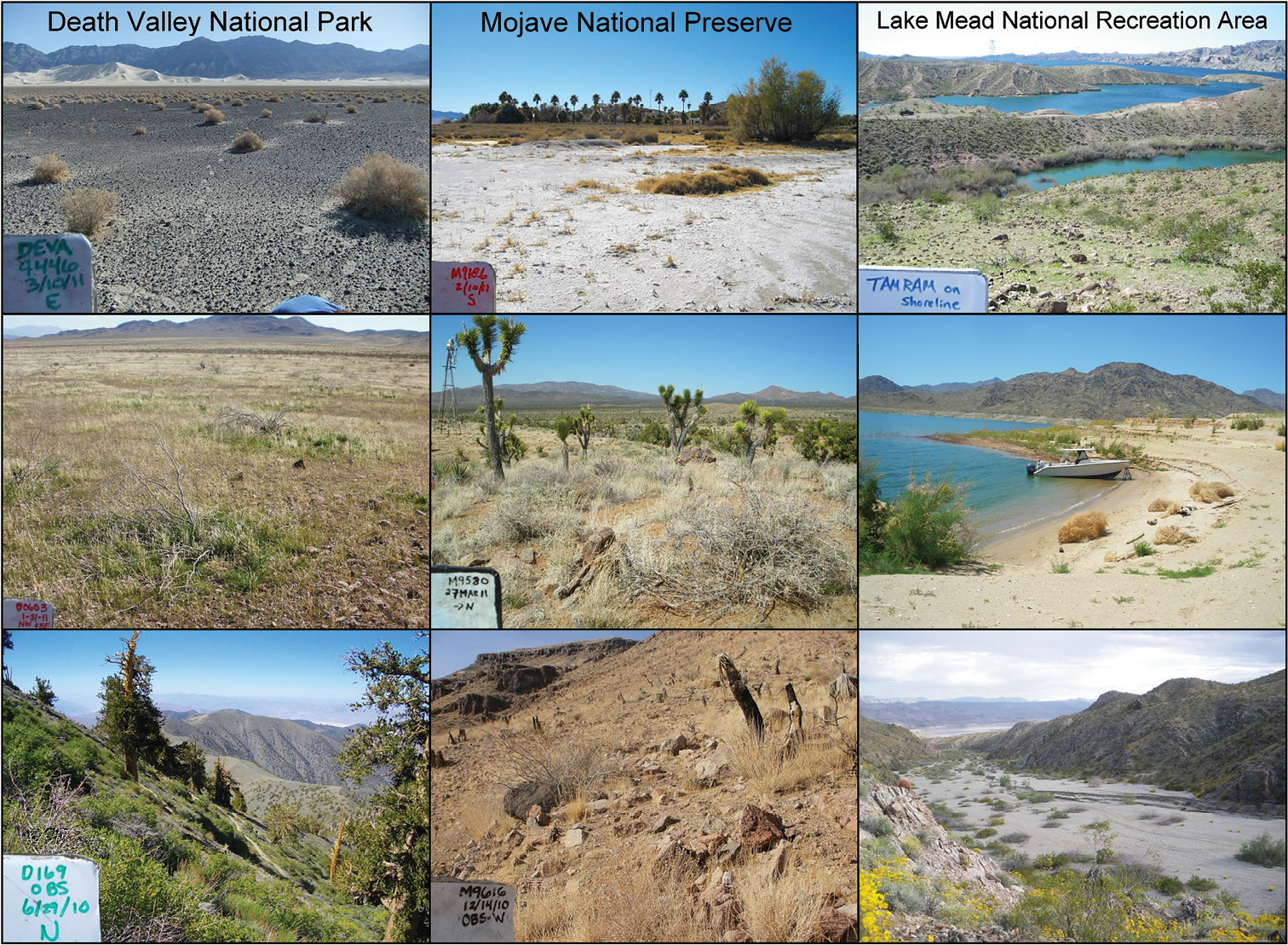
|
||
|
Views of national parks showing the variety of contexts in which non-native plants occur. Death Valley National Park: top: Death Valley floor where non-natives were generally sparse; middle: an area previously dominated by native shrubland and converted largely to non-native Bromus annual grassland following wildfire; bottom: Panamint Mountains where Bromus tectorum was the major non-native species. Mojave National Preserve: top: developed area with a history of human occupation and disturbance (Zzyzx, California); middle: Yucca brevifolia-Coleogyne ramosissima mature native shrubland, among the most susceptible communities to wildfire spread facilitated by non-native grasses; bottom: this community type following wildfire. Lake Mead National Recreation Area: top: Tamarix spp. (tall, green, leafy trees) infesting riparian areas around the Lake Mead shoreline; middle: shoreline activities can distribute non-native plants, making treating non-natives along the shoreline a priority for park managers; bottom: natural washes can serve as vectors for dispersal of non-natives. |